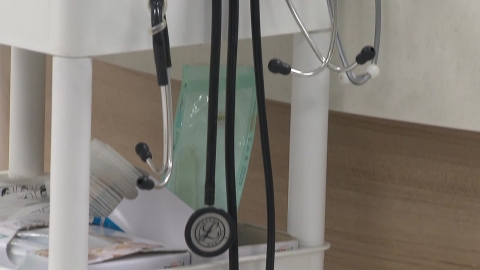■ Starring: Oh Yoon-sung, professor of police administration at Soonchunhyang University
* The text below may differ from the actual broadcast content, so please check the broadcast for more accurate information. Please specify [YTN News UP] when quoting.
[Anchor]
I'll solve it from the perspective of major incident accidents and criminology. With Oh Yoon-sung, a professor of police administration at Soonchunhyang University. Please come in. Let's start with the first case. It's the Apgujeong Rolls-Royce case, and the Supreme Court ruled yesterday. You've got a 10-year prison sentence, right?
[Yoon Sung Oh]
In this case, Shin, who was driving a Rolls-Royce vehicle near Apgujeong Station in Sinsa-dong, Gangnam-gu, rushed to the sidewalk and hit a woman in her 20s. At that time, he was arrested and charged with running away. Before the accident on the day of the crime, a nearby plastic surgery clinic administered sleeping anesthetic drugs twice, and in fact, despite the doctor's advice at the time not to drive, the victim was brain dead with severe head and legs injuries and died about four months later on November 25 last year.
Shin was sentenced to 20 years in prison in the first trial. However, the second trial cannot say that the intention to flee was proved without reasonable doubt. In other words, it is judged that it has not been proven to be completely intentional to escape. The sentence was reduced to 10 years in prison, and on the 20th of yesterday, the Supreme Court confirmed the original ruling, which sentenced him to 10 years in prison on charges of dangerous driving death under the Specific Crime Weighted Penalty Act.
[Anchor]
The part you pointed out at the end. It was 20 years in the first trial, but it was cut in half in the second trial, right? The part that was commuted to 10 years in prison, but the perpetrator caused damage and left the scene of the accident without rescuing the victim. Why is this not recognized?
[Yoon Sung Oh]
In the first trial, the bereaved family considered a petition for severe punishment at that time. And in the case of the court, as I said earlier, he ignored the doctor's advice not to drive and left the scene of the accident for about three minutes immediately after the crime. So this is a charge of escape death because he was in a hurry to destroy evidence. And in the case of the second trial, it seems to have been agreed with the bereaved family. Therefore, he found the charge of escape death not guilty and commuted his sentence to 10 years in prison, because he left the scene for 3 minutes, it cannot be regarded as a purpose of escape. The reason was that I told my neighbors that I was going to find my cell phone, and I acknowledged that I went to the hospital for three minutes.
In addition, I thought of a cell phone that was fiddling with something in the driver's seat on CCTV, but even though I corrected it later, I couldn't conclude exactly whether it was a cell phone or not. In the end, the court's judgment on these three minutes seems to have been reduced from 20 years to 10 years.
[Anchor] The perpetrator
was in a state of being under the influence of drugs at the time of the accident, and he will be punished separately, right?
[Yoon Sung Oh]
That's right. It's separate from a car accident. On the day of the crime, it was investigated that the plastic surgery clinic administered psychotropic drugs twice under the guise of dermatological procedures. As a result of the National Forensic Service's evaluation, it was determined that it was seven psychotropic drugs, including ketamine. In addition, he was charged with habitual use of psychotropic drugs on charges of habitual use of psychotropic drugs for moving to 14 hospitals 57 times over a year and two months from June 2022 to August 2023, and was sentenced to two years in prison in the first trial. We are currently in the trial of an appeals court.
[Anchor]
We also need to wait and see the results of the trial on the drug administration. Let's move on to the next case. Yesterday, Dongduk Women's University conducted a student vote on whether to approve or disapprove of the coeducational transition, and not a single vote came out.
[Yoon Sung Oh]
99.9%. Now, the student council of Dongduk Women's University actually has 6,500 students, and the opening quorum of the participants is 650, which is 10% of the student council. However, 1973 people attended the general meeting, and as I said earlier, 1971 people expressed their opposition to the transition to co-educational education. Therefore, it seems that they are holding a sit-in protest to occupy the facility, but the student council is scheduled to meet on the 21st, and if the engineering conversion agenda itself is withdrawn, they are willing to withdraw from the protest. On the other hand, an official at Dongduk Women's University said, "Not all of the students actually participated, but there are opinions among the students that oppose it." Therefore, he expressed his position that he would fully collect students' opinions in the decision process to switch to co-educational.
[Anchor]
As you said, there were about 6,500 students, and 1,900 of them attended. In any case, the gap between the school and the students is not narrowing. Professors also issued an appeal as a group.
[Yoon Sung Oh]
According to an appeal by a group of professors at Dongduk Women's University, some students are continuing to infringe on students' right to learn and professors' right to study by damaging on-campus facilities and occupying buildings. While saying this, he expressed concern about the fact that the conflict in the school turned into a social problem and said he hopes this will stop immediately. In addition, the refusal of group classes and the closure of unauthorized occupation of classrooms are serious issues that hinder normal educational activities or legitimate academic administration. He said he hopes it will be normalized soon. Finally, at the general meeting, the university said that school facilities should not be damaged or damaged for any reason, and that the university's claim that the goal of women's universities is to extinguish nature is shocking.
[Anchor]
The school said it would respond hard to the students, but it also mentioned the estimated amount of damage.
[Yoon Sung Oh]
The school estimates that the amount of damage is between 2.4 billion won and 5.4 billion won, but it has expressed its intention to hold it seriously responsible for this incident. In fact, it has been reported that if you see it, there is violence or a bust, and there is a spray on it.
[Anchor]
If you look at the legal profession now, there is a possibility that students will be criminally liable as well as civil damages.
[Yoon Sung Oh]
There are many different opinions.Ma is a little stronger to say that not only criminal liability but also civil liability for damages can occur now. So, even if you are a student, you said that it could be criminal responsibility, that is, property damage, in that it means that you paint a bust or damage a property without permission. And in fact, there is an opinion that obstructing a fair or breaking into a professor's lab, which has nothing to do with opposing the transition to co-education, can also be a problem.
[Anchor]
I hope the students and the school will find some contact. Let's move on to the last case. As the end of the year approaches, the police are intensively conducting a special crackdown on drunk driving, but there is a video prepared. Let's watch the video together and talk about it. Three police cars are now surrounding one vehicle. The police and the driver are pushing and pulling each other and are now scuffling. This is catching a drunk driver, right?
[Yoon Sung Oh]
That's right. That's the incident that happened on the 17th. A man in his 30s ran about 20 kilometers from Siheung, Gyeonggi-do to Namdong-gu, Incheon in 15 minutes, drunk after refusing to request a drunk driving control. In the process, a 1-ton truck and a patrol car parked on the road were also hit. As you can see, after the accident, several police officers are finally pulled out after they join forces to hold out in the car. The police have arrested Mr. A by applying reckless driving, refusal to measure alcohol consumption, and obstruction of the execution of special officials.
[Anchor]
As you can see on the screen, there are quite a few cases of drunk driving and trying to run away somehow rather than responding smoothly when caught in a crackdown.
[Yoon Sung Oh]
There are many cases. Once you get drunk driving, you run away, or go to a nearby convenience store and just drink soju. Also, there are phenomena in which police officers are injured quite a lot in the process of driving recklessly and hanging police officers who are restraining them in the car. Running away in that way after driving under the influence of alcohol can at least be a form of proof that you are clearly aware that your behavior is wrong. If you don't run away in such a situation and are caught as it is, you may not be able to recognize yourself about drunk driving, but if you catch it, it seems that various actions such as escaping continue.
[Anchor]
In fact, when I see people who get drunk driving, few people seem to do it only once, and many people get caught because they do it multiple times.
[Yoon Sung Oh]
So, due to the habit of people driving under the influence, this is habitual. Of course, they think what they do is wrong, but the moment they drink, they lose their judgment. That's why it's the first time we've been caught because we're really unlucky to say that we've been caught once, but we rarely get caught. We can assume that there are a lot of things that have been caught once or twice, including those that have not been caught. Even if we see that the drunk driving recidivism rate is now approaching 40% according to current statistics, it is highly likely.
[Anchor]
In the future, punishment for drunk driving will be strengthened. Some amendments to the Road Traffic Act were passed by the National Assembly plenary session on the 14th to punish the aforementioned drunkenness and such tricks. What is it about?
[Yoon Sung Oh]
This time, the basis for additional punishment has been established to punish those who go nearby and drink again to neutralize the measurement of blood alcohol levels. Therefore, the statutory sentence for the obstructor of the breathalyzer test is the same as that of the person who refuses the breathalyzer test. In other words, they are subject to imprisonment for not less than 1 year and not more than 5 years, or a fine of not more than 5 million won and not more than 20 million won. In fact, this is a legal basis, so to be at least specific, it seems that the act of going to the neighborhood and drinking again after driving under the influence will be completely eradicated.
[Anchor]
There is also a conditional driver's license system. What is this like?
[Yoon Sung Oh]
This means that the conditional driver's license system will be implemented only when a drunk driving prevention device is installed to re-acquire the driver's license after violating the prohibition regulations such as drunk driving or non-compliance with the drunk driving test from October 25th and re-acquiring the driver's license within five years. Specifically, it can be seen as a starting lock that does not start at all if it measures itself before driving and has a higher blood alcohol level. In fact, this was introduced in Korea this time, but it's quite late. In the case of the United States and Canada, it has already been implemented by region 30 to 40 years ago, and if it is implemented this time, it will be quite effective.
[Anchor]
The National Police Agency has already carried out a special crackdown on drunk driving since this month. It's going to be held until the end of January next year, but usually December and January, it's starting from November this year.
[Yoon Sung Oh]
As such, the National Police Agency recognizes that drunk driving is serious in Korea. So, we have been conducting what we usually do in December and January of the year-end and New Year since November. So, if the National Police Agency organizes it, the local police agency organizes the crackdown more than twice a week every Thursday. It would not be an exaggeration to say that they do it almost every day because each region is cracking down on them at all times and from time to time, but what is unusual is that from this year, not only drunk driving but also drug control will be carried out.
So, I suspect drunk driving, and if there is no figure detected at all, or if there is no consent from the driver, considering the possibility of drug use when cracking down near clubs or entertainment establishments, I will get a warrant and enforce it. And I'm willing to do a thorough inspection. As such, it can be seen that not only drunk driving but also drugs are deeply involved in Korean society. It seems that the police are actively and appropriately responding to this.
[Anchor]
The year-end and New Year's holidays are approaching, with more drinking. I don't think I should ever drink and drive. I was with Oh Yoon-sung, a professor of police administration at Soonchunhyang University. Thank you.
※ 'Your report becomes news'
[Kakao Talk] YTN Search and Add Channel
[Phone] 02-398-8585
[Mail] social@ytn. co. kr
[Copyright holder (c) YTN Unauthorized reproduction, redistribution and use of AI data prohibited]
Society
More- Lee Jae-myung, who asked me to tell you as I am...What's the issue of perjury teacher?
- "Perjury Teacher" ahead of sentencing...It started 22 years ago with the 'prosecutor impersonation' incident.
- Lee Jae-myung's Presidential Election Schedule Affected by the Sentencing Results of 'Charges of Perjury Teacher'
- Lee Jae-myung's perjury teacher was sentenced to the first trial today...Prosecutors sentenced to three years in prison






![[Y ranking] Fashion best Hani vs. Worst Refined Rice](https://image.ytn.co.kr/general/jpg/2024/1124/202411240801017328_h.jpg)


